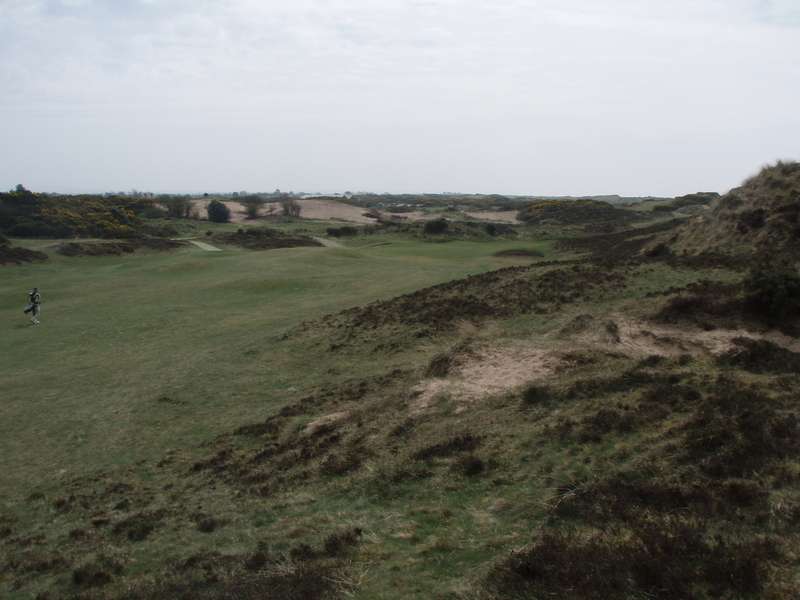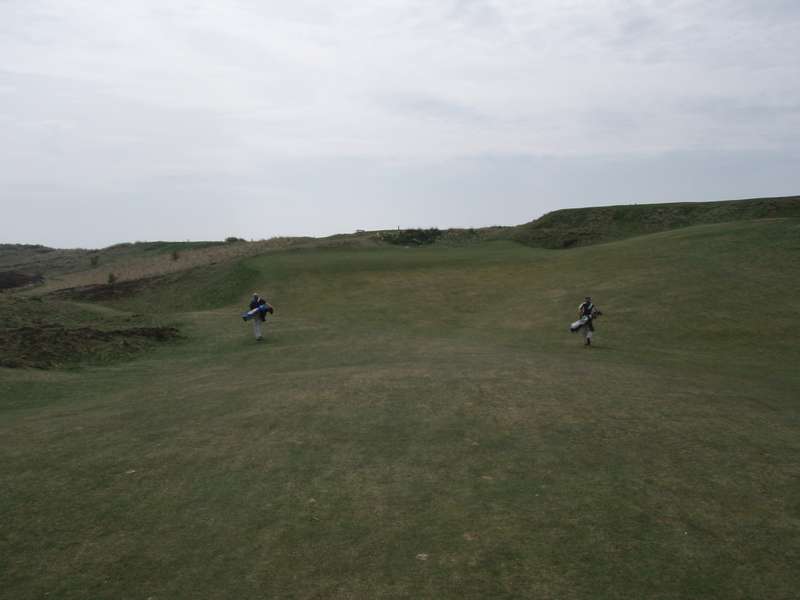I've eyed off many 1st tees in GB&I after walking off the corresponding 18th green, wondering if I might get a few more holes in before darkness or other commitments dictate that I put the clubs in the car, but none demanded a replay as much as Silloth-on-Solway.
Silloth may have the best site of any links course I have played.
Silloth is likely the most beautiful of any course I have played.
Silloth is near certain the most consistent course I have played.
Silloth is unquestionably one course you should ensure you visit.
Located about as far north and west as it is possible to get and still see the St George's Cross flying from the clubhouse flagpole (I played in a festive move given it was the day after St George's Day and the day before ANZAC Day - the biggest days for my home country and adopted temporary home country), Silloth should be pictured in the dictionary as the definition of remote, but no detour could be more worthwhile in GB&I than the left turn off the M6 at Carlisle.
For those who appreciate value - and don't we all - myself, Mark Pearce and Andrew Mitchell paid the princely sum of £55 to play at 2pm on Saturday and what's more the pro allowed us to play from the members' competition tees.
Golf World rates Silloth at 48 in GB&I. I think that does it a disservice. It holds its own in a head-to-head comparison with any golf course I have played.
The course opens with a 380y (all distances unless stated otherwise are from from white [second to back] members' tees) par four to a dell green - the first of many blind shots, but the blindness is typically combined with some space and an absence of hazards.
An out of place drive can use the front slope to get on the green or therabouts, while the putting surface falls gently from left to right, where balls will feed off if pushed slightly or putted too boldly.



The 2nd is a shortish, but not easily reachable 315y par four that bends gently to the right around a heather-clad dune.
I'll mention the heather and gorse early: it is a beautiful feature but also adds some teeth, though it seems the club has been working to keep the gorse back from playing areas. But with that prickly plant waiting off-line, it may be the first time I ever prayed for my ball to end up in heather! Funny how it becomes an attractive option when an even more uncompromising foe is beyond it!
To try for a drive close to the green requires a driver to a blind landing area at the inside of the dogleg, which is where the green opens up. The more safe play of a long iron or hybrid down the left brings into play a dune short of the LHS of the green that wreaks havoc with an approach or recovery shot from that side.
The greens are undoubtedly a feature of Silloth, brilliant in their variety, and the 2nd is one of the more subtle complexes that still has oodles of strategic interest. On return plays it will definitely be a green I consider while standing on the tee.



The 3rd was one of my favourite holes on the course.
A 352y par four, it doglegs left as it climbs a steady hill to a plateau green that features a steep LHS fall-off. The more adventurous are tempted to cut the dogleg, protected by a dune covered in heather, but there is ample fairway to the right for mere mortals.
By this stage of the round you are already realising the wonderful movement in the land is as constant as the heather and gorse. Sidehill, uphill, downhill... the lies at Silloth are always interesting, testing your shotmaking chops. I can't think of a fairway that didn't have some interesting movement, creating preferred approach zones even when there wasn't an obvious hazard to scream loud and clear where a tee shot should be placed for the A1 approach.
The greenfront lets you approach by air or ground, but the strong R-toL slope means a running shot has to be played with intent or it will run away down the hill.
Look between the three stakes at the foot of the tee and raise your eye straight up and you'll see ythe yellow flag against the brown of the rough on the dune. The guys you can see are up on the 4th tee.


